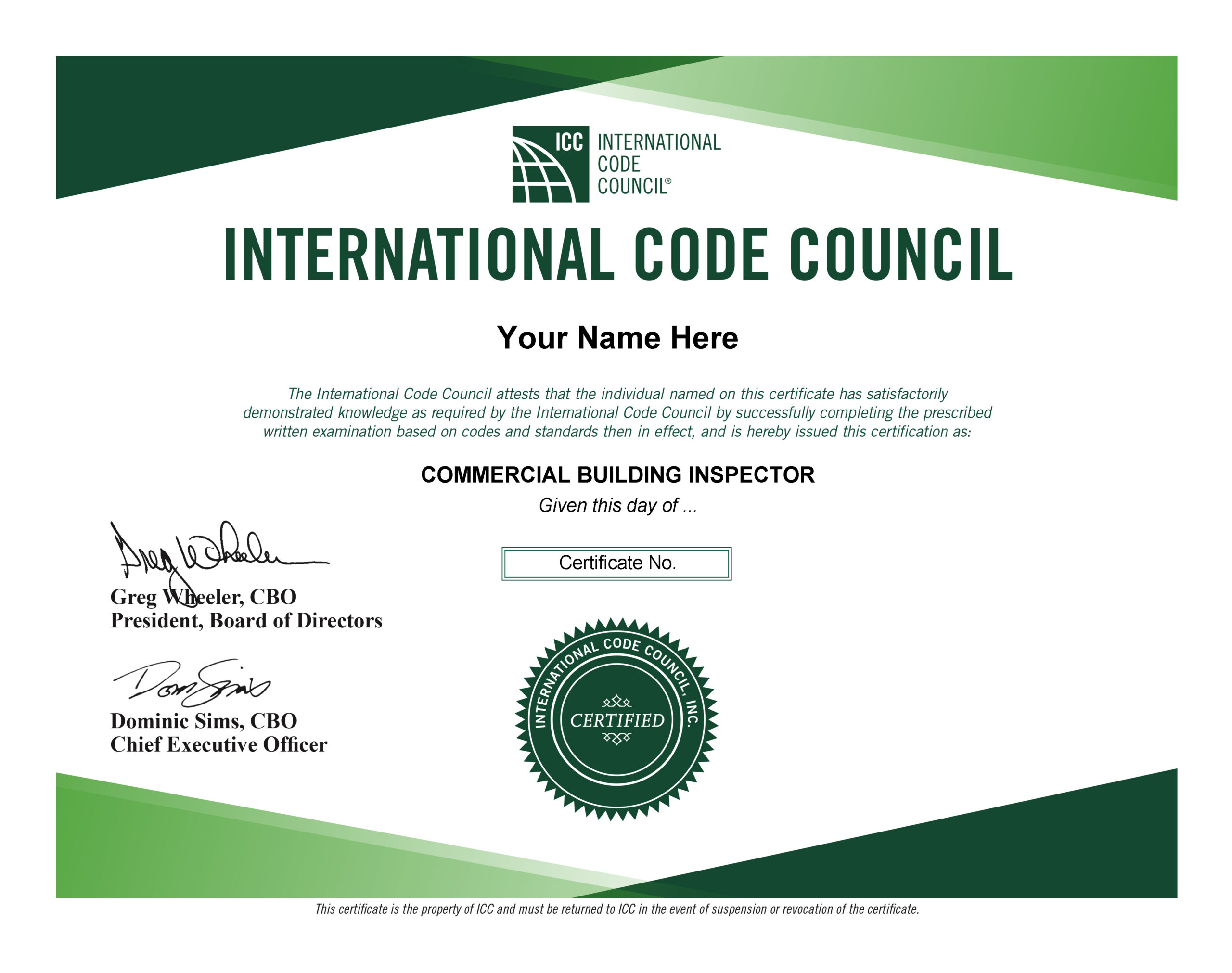
$34.99
Includes 2 Practice Exams, 80 Questions Each
Have you ever desired to become a Certified Commercial Building Inspector?
Well your first step is to know a little bit about the exam itself and what areas you should be studying for.
The B2 Commercial Building Inspector Certification Exam administered by the International Code Council (ICC) tests an individuals knowledge of the International Building Code (IBC).
As a Certified Commercial Building Inspector you will be responsible for performing inspections of structures to determine compliance with the International Building Code and Standards.
This level of certification allows the Inspector to inspect commercial structures structures of any size or occupancy.
Commercial Building Inspector Exam Specifications
The exam consists of 80 multiple-choice questions. You have a time limit of 3 hours and 30 minutes to complete the exam and it is open book meaning you can only use the code book referenced by ICC. For this exam it is the International Building Code (IBC).
The code edition of the reference used should reflect the code edition of the exam you are taking. For example if you plan to take the 2021 version of the exam, you should use the 2021 International Building Code. No work experience is required to take the exam and you must be at least 18 years of age.
The International Code Council (ICC) requires you to take the exam through the PRONTO system.
PRONTO is a new way of taking your testing exam from the comfort of your home or office. PRONTO stands for Proctored Remote Online Testing Option. For more information about the PRONTO online testing option, click here.
What does the B2 Commercial Building Inspector exam cover?
This exam covers 7 main areas such as:
- General Administration
- Building Planning
- Footings and Foundations
- Floor Construction
- Wall Construction and Coverings
- Roof/Ceiling Construction
- Public Safety and Special Construction
The following exam content outline can act as a study guide to help you study for the exam and to gain an understanding of what the exam will cover.
General Administration | 6% |
Project Administration | 1% |
Public Information and Legal | 1% |
Plan Reading | 4% |
Building Planning | 20% |
Fire Resistance-Rated Construction | 5% |
Building Location | 2% |
Interior Environment | 1% |
Occupancy Classification and Type of Construction | 5% |
Safeguards During Construction | 1% |
Accessibility | 2% |
Material Quality | 2% |
Interior Coverings | 2% |
Footings and Foundations | 8% |
Footings | 3% |
Stepped Footings and Special Foundations | 1% |
Piles and Piers | 1% |
Foundation Walls | 3% |
Floor Construction | 8% |
Floor Systems | 5% |
Concrete Slabs | 3% |
Wall Construction and Coverings | 21% |
Wood Wall Systems | 5% |
Steel Framing Systems | 3% |
Masonry Wall Systems | 5% |
Concrete Wall Systems | 3% |
Wall Reinforcement | 2% |
Exterior Sheathing and Weather-Resistant Coverings | 3% |
Roof/Ceiling Construction | 6% |
Roof/Ceiling Assemblies | 5% |
Roof Sheathing and Coverings | 1% |
Public Safety and Special Construction | 31% |
Means of Egress | 10% |
Fire Protection Systems | 4% |
Smoke and Fire Venting Control | 4% |
Interior Finishes and Insulation | 4% |
Safety Glazing and Glass | 4% |
Opening Protectives, Penetrations, and Joint Systems | 2% |
Miscellaneous Construction | 1% |
Building Services and Special Construction | 1% |
Fireplaces and Chimneys | 1% |
What do you get when you pass the exam?
Certification
Bragging rights! Well actually you will receive a pass letter the same day right after your exam. You will have a certification number assigned to you so that if someone were to search for a certified professional within the ICC website, your name will come up! In addition to being a Certified Commercial Building Inspector (Yayyy!) you will receive a wall certification that looks like this…

Need Practice?
Why not try our (B2) Commercial Building Inspector Practice Exam?
Want to test your knowledge of how well you know the code? Or maybe just get a feel for the exam?
Try out our Practice Exam for the B2 Commercial Building Inspector Certification Exam!
This practice exam is designed for those who are looking to take the 2021 or 2018 version B2 Commercial Building Inspector Certification Exam through the International Code Council (ICC). These practice exams are intended to help you prepare for the actual exam by helping you navigate through the code book to familiarize yourself with the specific code sections. They will test your knowledge on the exam content areas covered to improve your chances of passing the certification exam.
This is a great way to prepare yourself for the actual exam administered by ICC. Every building code professional knows that the key to passing the ICC exams is to do practice problems. Don’t just take the exam purely on experience alone. Let this resource get you focused on realistic problems built around the exam content being covered.

$34.99
Includes 2 Practice Exams, 80 Questions Each
Happy Test Taking!
Related Articles to Read:
